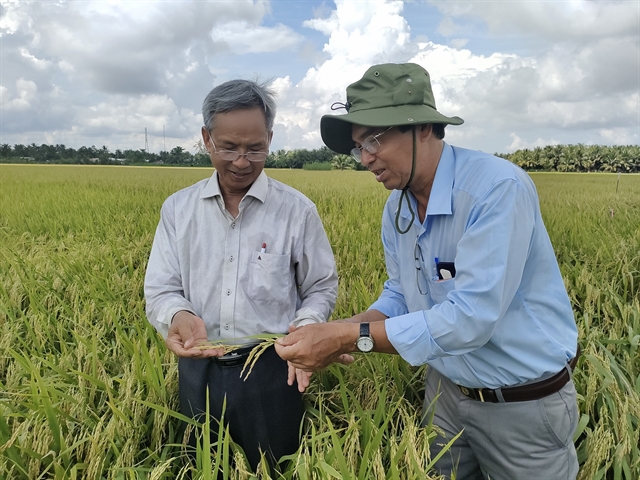 Society
Society

.jpg) |
| Rice loaded for exports at Việt Nam Southern Food Company in HCM City. The rice export prices are likely to be pushed up in the coming time as many countries begin to increase imports. — VNA/VNS Photo Vũ Sinh |
HÀ NỘI — Việt Nam's rice exports are expected to continue their upward trajectory this year, toward a milestone of US$5 billion in turnover.
The year marks a period of anticipated volatility in the global rice market, encompassing fluctuations in production and demand, as well as in related policies from leading exporting nations. Hence, innovation in production and flexible export management are crucial conditions for the Vietnamese rice industry to achieve its growth targets.
According to the Ministry of Agriculture and Rural Development, despite a trend of narrowing the rice cultivation area nationwide, the farming sector strives to maintain a stable plantation of 7.1 million hectares in 2024. The output of the grain is projected to exceed 43 million tonnes, with about eight million tonnes for export.
This year’s forecast also suggests that the prices of agricultural input materials will remain high, with potential risks of crop disease outbreaks as well as El Niño-induced severe droughts and water shortages. Therefore, the agricultural sector is set to instruct localities to adjust production plans and structure suitable crop seasons to stabilise the rice supply, especially high-quality sources serving export. Engaging in innovative production activities, many enterprises are focusing on developing varieties and providing scientifically sustainable farming solutions for farmers.
On the early days of February, Việt Nam's 5 per cent broken rice was sold overseas for $638 per tonne, surpassing Thai rice of the same grade by $10 per tonne. According to the Việt Nam Food Association, the export prices are likely to be pushed up in the coming time, as many countries begin to increase imports and India continues to maintain its ban on exporting certain types of rice.
Meanwhile, information from the National Agro-Forestry-Fisheries Quality Assurance Department reveals that the global rice production could near 520 million tonnes this year, while consumption is approaching 525 million tonnes, indicating a potential shortage. Therefore, rice processing and exporting enterprises need to closely monitor the market to efficiently perform existing and new contracts, considering both price and quality.
Nguyễn Việt Anh, General Director of the ORIENT Rice Co Ltd, said he believes that given the market fluctuations, the adaptability index of enterprises is extremely important because each year brings new scenarios and there are no lessons learned from the previous year that can be effectively applied to the next. Rice remains an essential commodity globally as well as in Việt Nam, so in the near future, there are significant opportunities for production and business in this field. It is essential for exporting enterprises to enhance their adaptability and flexibility to capitalise on the chances. — VNS




